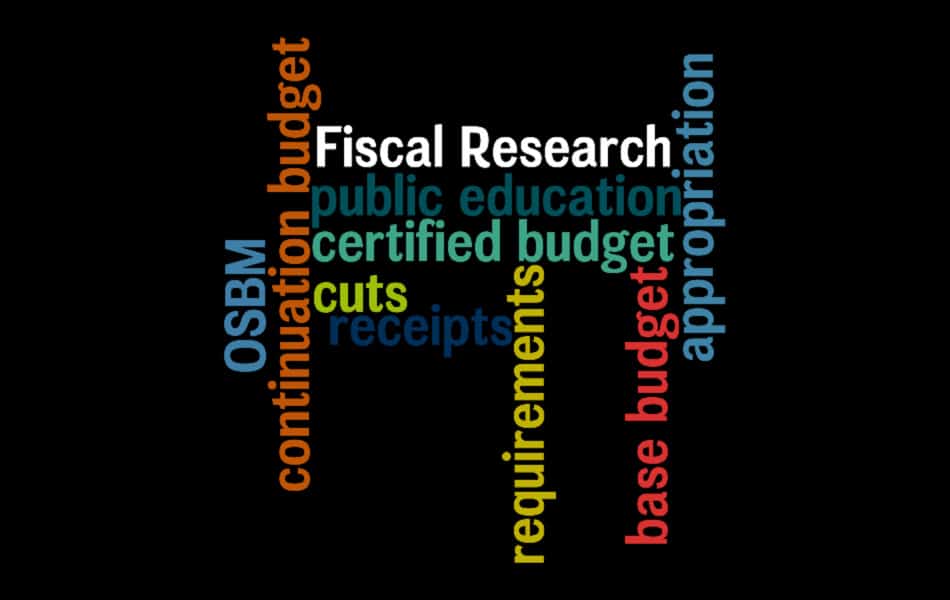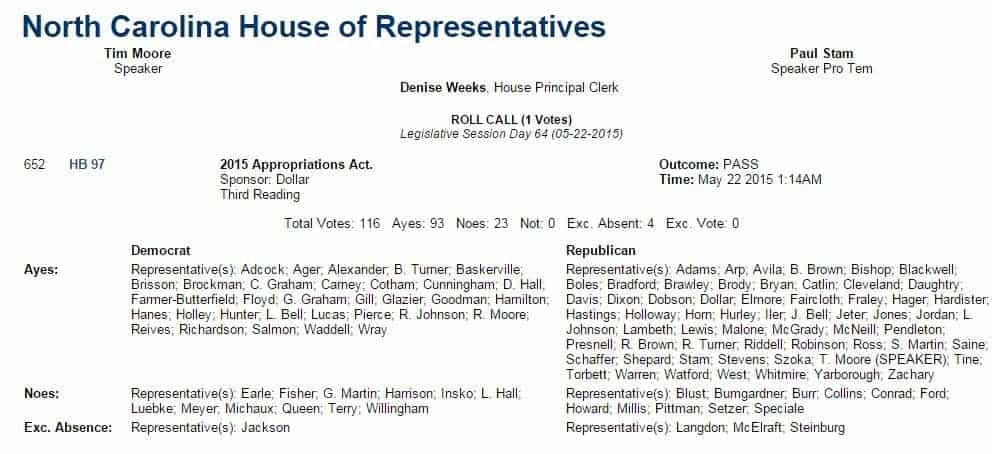

With 2.6 million Democrats, 1.9 million Republicans, and 1.7 million unaffiliated voters, our great state of North Carolina has an opportunity to use the budget process to show the nation what it looks like to embrace being a purple state. The Governor and the House have positioned us to end up with an education budget that a wide swath of North Carolinians could feel good about. Now it is up to the Senate to take the lead.
We all call this state home
As I travel across the state and talk to all kinds of people – rich and poor, urban and rural, old and young, all races, liberal and conservative – it strikes me that there is one thing that binds us together. Whether we grew up here or moved here later in life, we choose to call this state home. And most of want the same things for our life here…good jobs, educational opportunity, health care, transportation. But we often have very different ideas on what changes in policy are needed to make this state great.
That is where EdNC and our work on education – nonpartisan in our information and bipartisan in our process – can make a difference. In this purple state that we all have chosen to call home, the voice of the EdNC in fostering civic dialogue and bridging partisan divide is more important now than ever. On the issue of education, we believe that the issues that divide us matter less than what unites us.
Here are some ways for you to think about the budget and where we are in the budget process.
A model for budget analysis and civic dialogue
I have followed the work of the Citizens Budget Commission of New York for some time because of my role as a trustee for the Governmental Research Association.
Earlier this year, the Commission wrote a letter to state legislators about their state’s executive budget. In the letter, the Commission noted three things they supported, two things that needed to be improved, and three things they rejected.
As you reach out to your legislators, which I hope you will do, I encourage you to identify which education funding priorities you agree with, which priorities can be improved – identifying both how and how much it would cost, and which you disagree with.
Our budget picture
When Governor Pat McCrory released his budget in February, our budget picture was very different. We thought we were facing a $271 million shortfall in revenue.
On May 6, 2015, our budget picture changed when the Fiscal Research Division of the General Assembly and the Office of State Budget and Management reached consensus on the 2015-17 revenue forecast.
The report says, “The forecast expects FY 2014-15 collections to be above the budgeted amount by $400 million.”
Staff had taken a cautious approach to estimates on major changes to the tax code, which affect $2 billion in revenue items, so we ended up with an April surprise. This surprise is largely attributed to personal income tax revenue. People reported more business income and income from the sales of stocks and real estate, and there was a 57 percent decline in refunds.
Unspent dollars reverting back to the state’s General Fund may produce a total surplus of about $850 million.
As you compare or read about comparisons between the Governor’s budget and the House or Senate budgets, keep in mind that the budget picture changed after the Governor released his budget.
The Governor’s budget
The Governor’s budget proposed $21.5 billion in state appropriations with 56 percent, or $12.1 billion, on education. Of that, 70 percent, or $8.4 billion, was allocated to K-12 spending. The Governor’s priorities included:
Teacher pay: increasing base pay for new teachers to $35K and funding salary increases for other teachers as indicated on the salary schedule
Enrollment growth: fully funded DPI’s projected enrollment growth. In 2014-15, there are 1,520,305 students, and DPI projects there will be 1,537,643 students in 2015-16 and 1,555,344 in 2016-17. 1,431 more teachers will be needed to serve these students.
Teacher assistants: Retains recurring funding for almost 2,000 teacher assistant positions.
Pay-for-performance: $15 million was allocated to reward high-performing teachers.
Textbooks and instructional supplies: An additional $70 million was allocated.
Pre-K: A recurring increase in funding to serve more than 26,800 at-risk 4-year-olds.
The Governor included $40 million in cuts to diesel fuel cost, salaries because of retirement and resignation, a 10 percent cut to DPI, and a 2 percent cut to the central office of school districts.
The Governor’s budget did not address district and school transformation, professional development, or the principal leadership academies — all previously funded with federal dollars through Race to the Top.
The House budget
Here is the budget bill that passed the House 93-23 on May 22, 2015.
Here is the committee report as of May 21, 2015.


Under this version of the bill, the total General Fund budget would be $22.2 billion in 2015-16 and $22.4 billion in 2016-17. For 2015-16, that’s a $1.3 billion increase in spending.
Total spending on education — K-12, community colleges, and the UNC System — is $12.5 billion in 2015-16 and $12.6 billion in 2016-17. Spending on K-12 is $8.6 billion in 2015-16 and $8.7 billion in 2016-17.
The House priorities include:
Pay: All educators are paid at least 2 percent more than in 2014-15 and starting pay is increased to $35,000.
Enrollment growth: Fully funded.
Teacher assistants: $376.1 million in this line item to retain the state’s teacher assistants.
Textbooks and digital resources: Increases funding to $72.6 million in 2015-16 and $67.8 million in 2016-17.
NC Elevating Educators Act: $10.2 million over the biennium for a new initiative to pay effective teachers who teach more students.
Digital learning: $12 million each year for school connectivity and $9 million each year to implement the state’s digital learning plan.
Regional leadership academies: $3.9 million to continue for one year the state’s regional leadership academies to train principals.
Driver’s education: $26 million to restore state support for driver’s ed for one year.
Professional development: $2.4 million each year for professional development provided by the regional education service alliances (RESAs).
Microsoft statewide agreement: $2.6 million in 2015-16 and $2.7 million in 2016-17 for DPI to enter into an agreement with Microsoft to provide Microsoft Office to each students and all staff.
Grant to Parents for Educational Freedom in North Carolina (PEFNC): $1 million in each year of the biennium to accelerate charter school development in rural North Carolina.
Opportunities created by the April surprise
Here is what I like about the April surprise. North Carolina is getting ready to learn a lot about our Republican policymakers. We are going to learn what it looks like to have a fiscally conservative legislature now that we know more about the impact of changes to the tax code and our state’s economy post-recession. How much of the surplus will they invest in the state’s rainy day fund and fund for repairs and renovations to state buildings?
And we are going to learn more about their spending priorities.
From a policy and political point of view, we will see how the House, led for the first time by Speaker Tim Moore (R-Cleveland), and the Senate, led by President Pro Tem Phil Berger (R-Rockingham), negotiate differences on total spending and spending priorities within the party, and what, if any, role the Governor will play in crafting the final state budget.
Remember that our Democrats historically have tended to be fiscally moderate. So we also will see if there is a desire to craft a budget that a whole lot of North Carolinians can get behind. The April surprise creates that opportunity.
Budget 101
Each session there is a budget bill, and there is also a companion joint conference committee report, which provides details on the increases and decreases to the budget. You need to look at both.
Changes to the education budget can be found in the committee report. Recurring (R) means the dollars will be included in the budget going forward. Nonrecurring (NR) means it is a one-time appropriation. If the dollar amount is in parens, then the funds were reduced.
North Carolina will be using a base budget instead of a continuation budget going forward. Historically, the continuation budget included appropriation increases for the public school funding formulas (teachers, instructional supplies, textbooks, instructional support personnel, teacher assistants, etc.) due to projected increases in average daily membership (ADM). These are expansion items in a base budget.
Now is good time to note the difference between policy choices and the budget. Republicans have made policy choices about teacher assistants and our class sizes. Their budgeting on those line items is likely to be consistent with their policy choices. Currently, we have about 22,500 teacher assistants statewide, and here are the class sizes for FY 2014-15 — K: 1 teacher per 18 students; 1: 1 teacher per 17 students; 2-3: 1 teacher per 17 students; 4-6: 1 teacher per 24 students; 7-8: 1 teacher per 23 students; 9: 1 teacher per 26.5 students; 10-12: 1 teacher per 29 students.
Other EdNC resources on the budget process:
Getting ready for the education budget: What you need to know from 2014-15
Getting ready for the education budget: Legislative changes to the K-12 budget, 2011-15


